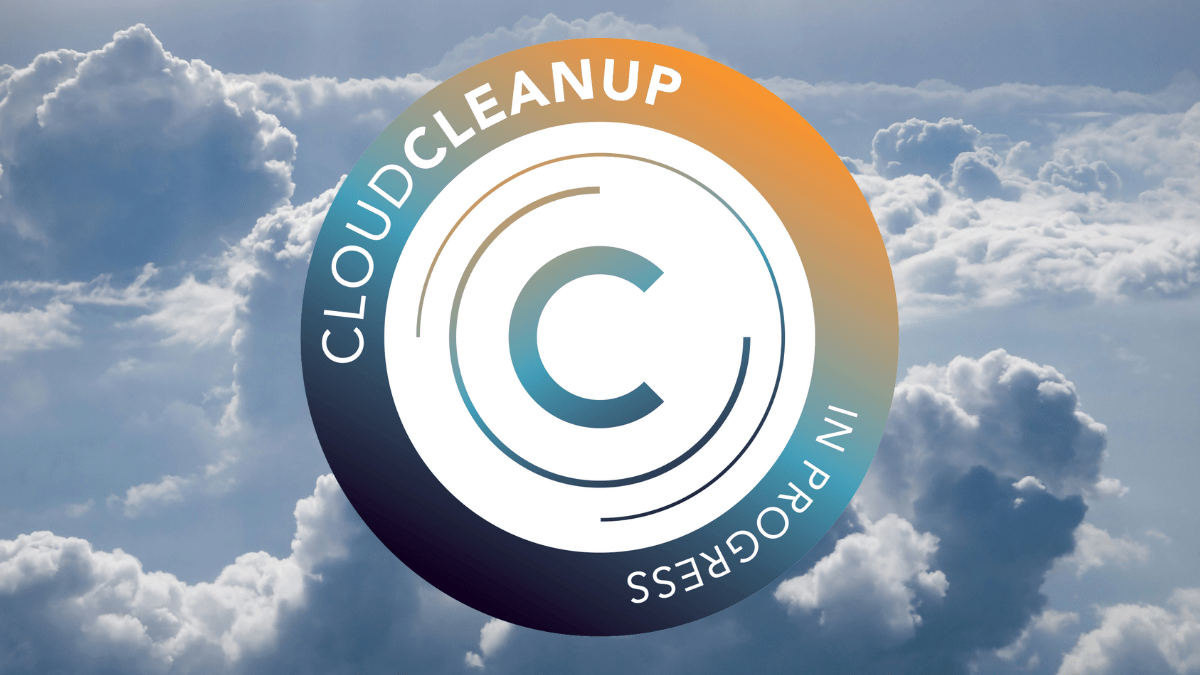Sustainable Clouds: interview with Software Architect Steef
Luminis helps organizations innovate successfully by empowering them with modern software technologies. However, we cannot separate the work we do from the impact we have on the world. We are working on that collectively in various ways, both in terms of social engagement, sustainability, and diversity & inclusion. In this article, we dive into the sustainability of IT architectures.
With the expertise we have, we can and want to work hard for a better world. We like to give our colleagues the freedom to contribute their own ideas and projects. For this interview, we spoke with Steef Burghouts about his experiences and ambitions regarding software development & sustainability.

Steef is a Software Architect at Luminis. Two years ago, he started with Accelerate, a training program to fast-track the tech leaders of the future. During this program, his ambition to make social impact was sparked. Since then, Steef has a variety of interesting projects to his name. His interest lies in sustainability and climate in combination with technology.
Climate change issues in IT
Steef’s interest in social impact projects has grown over the past two years. When asked why he has a greater focus on this, he answered:
“At the beginning of my career, I mostly went from project to project, without really thinking about the subsequent impact of what I was working on. During the Accelerate program, you work on your personal growth. Part of this includes conversations with coaches who ask questions about your ambitions and dreams. I realized that I also want to commit myself to social projects, for example concerning climate change issues. Climate change is one of the biggest challenges of our generation. I like to be part of the solution.”
Steef’s mission? To create awareness about the CO2 emissions of IT and the effect it has on the climate. The CO2 emissions of the IT industry are less visible and less measurable than for example aviation. As a result, IT’s impact on the climate sometimes doesn’t get enough attention during climate discussions. However, research indicates that the global IT industry is responsible for two to four percent of global CO2 emissions. By 2040, it is estimated to be between six and 14 percent.[1] This amount is comparable to the total emissions from aviation, so it is about time for some changes.
One reason that the IT has such high CO2 emissions is because of the continuous running of entire IT landscapes. This is where a major gain can be made, both in terms of CO2 emissions and financially. To achieve this, Steef is working on a tool for mapping the climate impact of IT architectures. Within IT, security gets attention in almost every project and conversation, so why not talk more often about sustainability?
Obviously, it’s easier said than done: starting the conversation with each client about sustainability and the impact of their IT landscape. This takes time and money. Fortunately, we have more colleagues like Steef who see the importance of this development. They test different methods during their work with customers, with the objective to pragmatically come up with a new approach.
More impact using smart systems at Milieudefensie
In 2022, Steef introduced Milieudefensie (Dutch for “Environmental Defense”) as a customer to Luminis. Milieudefensie has a big impact on the climate policy of the Netherlands, for example by filing lawsuits against big players like Shell. For these lawsuits, Milieudefensie makes many WOO (Wet Open Overheid, Dutch for “Open Government Act” requests to the Dutch government. Milieudefensie receives the answers to these requests as images, of which certain parts cannot be shared publicly and are taped off. The requests sometimes consist of thousands of pages of images, which are not easily searchable. Milieudefensie had to search these requests page-by-page, which took an awful lot of time.
What have our colleagues done for Environmental Defense? Luminis developed a document system that converts the images of WOO requests into text and makes them searchable. This makes it possible to search through the thousands of pages of images in a targeted manner through which useful information is found sooner. Milieudefensie saves more than 1 FTE per month by doing this. They can now use this time to make even more impact.
What Luminis has done for Milieudefensie is in line with the role we want to play more often. Milieudefensie showed us the value of making an impact. Steef explains why he finds this customer so important:
“I think Milieudefensie is a good organization because they are constantly looking very pragmatically at how they can make an impact. Moreover, it is very clever how they have filed and won various cases against, for example, the Dutch government and powerful companies. I sent Milieudefensie an email and asked what their challenges are and how we can help them. Their focus is not on IT, but good IT facilities do make their work easier. So it was a natural choice to use our knowledge and expertise there.”
A tool for every customer: the Cloud Cleanup

Sustainability and climate chance are present in Steef’s work every day. To start the conversation about sustainability with all our customers, he is now developing the Cloud Cleanup. Its purpose is to map the emissions of an IT landscape and offer suggestions on how to reduce them. Currently, IT emissions are not included in calculating an organization’s carbon footprint. However, measuring and knowing emissions is essential for creating awareness to reduce emissions step-by-step.
The question is why should our customers want this? Research shows that it is sometimes difficult to consider sustainability when making technology decisions.[1] All too often the emphasis is still on speed or continuity. Because security and reliability are paramount, overcapacity is often built in, for example by using extra servers. This not only costs a lot of money, but also causes extra CO2 emissions. As part of the Climate Agreement, the Dutch IT sector has stated its ambition to be climate neutral by 2030. An ambitious goal, to which everyone must contribute: from organizations and suppliers to developers.
Therefore, at Luminis, we are busy testing and further developing the Cloud Cleanup. We started this initiative in 2022, with which we also mapped our own emissions. Something we also like to make possible for our customers. Steef explains how the Cloud Cleanup works:
“The first step is a conversation with the customer to see what their IT landscape currently looks like. Once that is mapped out, we calculate the carbon footprint of that IT landscape. The next step is figuring out how this can be reduced using tools from cloud providers like AWS and Azure.”
A tangible example of applying the Cloud Cleanup is analyzing an organization’s running servers. It is common knowledge that many companies, under the pretense of continuity and availability, regularly operate with too many or too heavy servers. A less heavy server is a more sustainable solution in terms of climate as well as financially. However, you need to know the customer very well to advise on this.
“A company like Ticketmaster needs very heavy servers at times, but not when there are no tickets being sold. One solution could be to deploy additional servers at peak times and switch back at quiet times.”
These kinds of insights and desires are included in the Cloud Cleanup and ultimately provide each client with appropriate advice. Curious about the Cloud Cleanup? Contact Steef Burghouts at <steef.burghouts@luminis.eu>.
[1] ABN-AMRO. 2021. Verduurzaming van IT.